Our physical computing project started with the analysis of La Barceloneta. It is an area well known for its’ tourist flows. In order to identify the main touristic activities and interaction points with locals we used the field work we did for our previous studio work. From there it was clear that most of the tourists come to La Barceloneta for food and local Mediterranean cuisine.
In order to prove our hypothesis, we used Barcelona’s Open Data portal, which contains a database about commercial activities on the ground floor of all buildings in La Barceloneta.
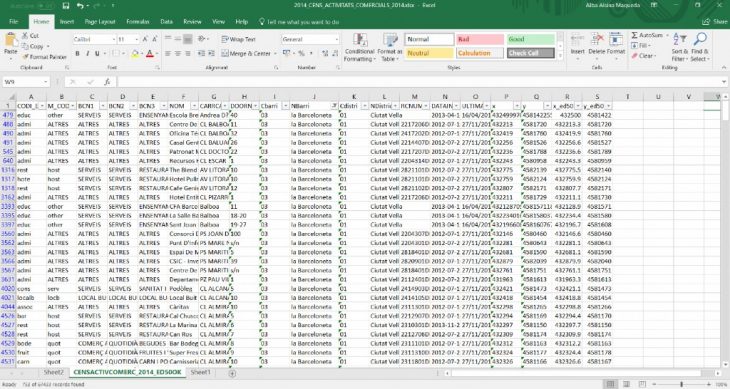
To visualise the data on our physical CNC milled foam board, we used Arduino and Processing. Arduino, an open-source electronics platform, allows users to read and write digital and analog inputs and outputs. Processing, also an open source software, is an environment which allows users to draw using code. By a process called serial communication (making communication between Arduino and Processing), we manipulated output in the Processing environment by applying forces to sensors read by the Arduino.
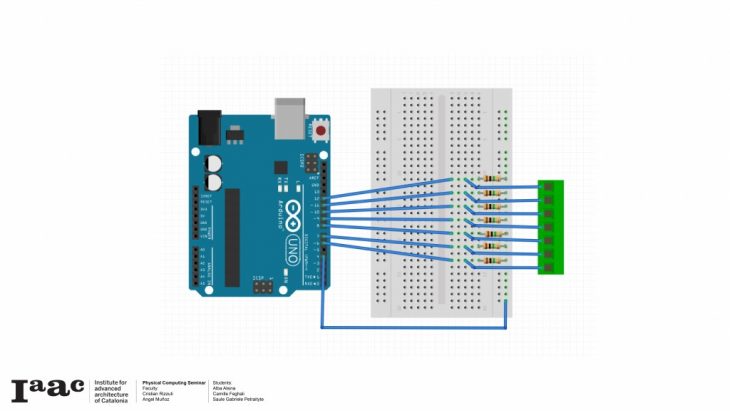
To create an interactive interface, we chose wood as a material and mounted capacitive touch sensors beneath it. Copper tape that works as an electrical conductor closes the circuit with the Arduino, and the machine can read the incoming signal by connecting both with electric wires. Because of wood specifications we had to use 10 Megohm resistors in order to allow for sensitivity across the wooden surface. Together we that and CapacitiveTouch Arduino library, we made 7 touch buttons that allow users to parse and go through the data projected on our model. In the Processing IDE we imported our datasets and the base map. Then we translated geographical coordinates into canvas coordinates and painted the markers .
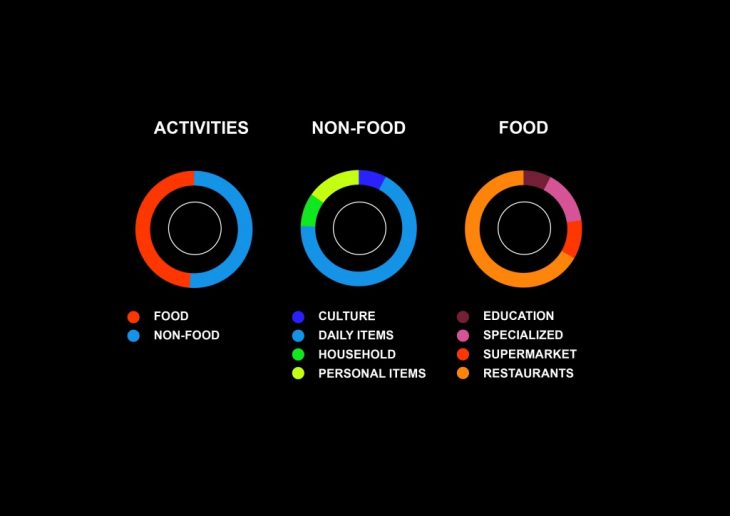
The final step was to communicate with the projector, and that was done using a library called Syphon, and a software called Resolume.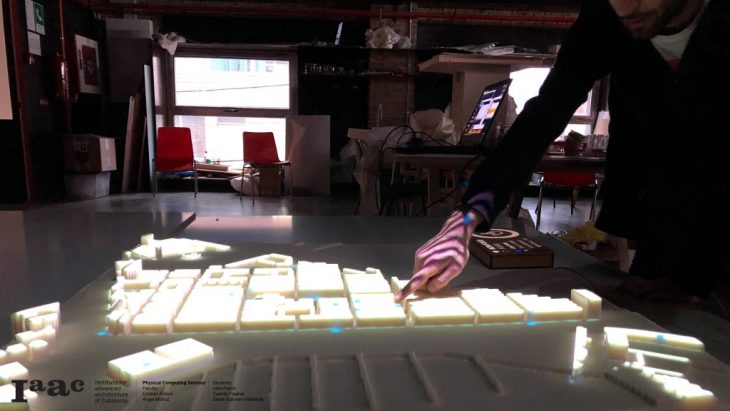
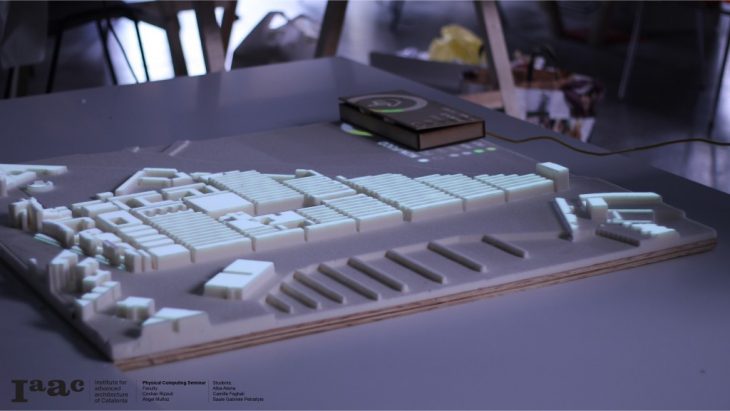
Tourists vs locals – La Barceloneta is a project of IAAC, Institute for Advanced Architecture of Catalonia, developed at MaCT (Master in City & Technology), 2017-18 by:
Students: Alba Alsina, Camille Feghali, Saule Gabriele Petraityte
Faculty: Angel Munoz, Cristian Rizzuti